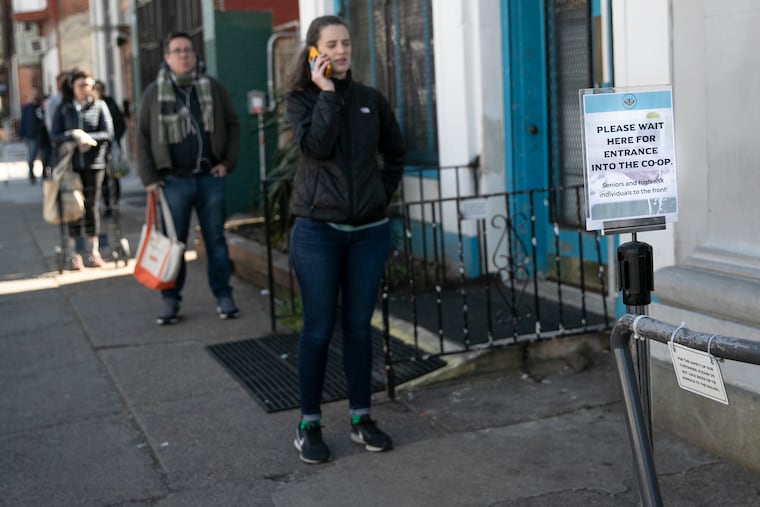Coronavirus math shows the importance of social distancing, and the horrible consequences of not doing it
The surge of coronavirus patients is coming. The way to avoid fueling it is to stay home.

If you still doubt the crucial importance of avoiding other people, or if you think Philadelphia’s “stay at home” order is excessive, consider this:
Without the lockdown in Wuhan, China, where the pandemic started, there would have been 44,214 cases in other Chinese cities through February — instead of the actual number of 27,956, according to a new study led by University of Pennsylvania economist Hanming Fang.
“Social distancing and, if an epicenter can be identified, as was the case for the city of Wuhan in China, a lockdown can play crucial roles in ‘flattening’ the daily infection cases curve, giving the stressed medical system a chance to regroup and deal with the onslaught of new infection cases,” wrote Fang and his coauthors.
“Flatten the curve” has become a rallying cry, but in New Jersey and New York, it appears to be too late. In both states, the average daily rate of increase is more than 50%, according to an Inquirer analysis of data from Sunday. As a trickle of patients has turned into a deluge, New York City hospitals are scrambling to find more ventilators and protective gear, and New Jersey is moving to reopen the former Inspira Medical Center Woodbury in Gloucester County as an intensive care facility.
In Pennsylvania, which so far has 644 reported cases, the tally is increasing at an average daily rate of 34%. Though lower, that’s still a growth trajectory that will lead to an overwhelming surge in patients needing hospitalization. And because testing in Pennsylvania has ramped up only in the past week, the growth rate may actually be higher. An analysis by Politico and the COVID19 Tracking Project found that New York has done about 61,400 tests, more than any other state. Pennsylvania has done about 5,400. New Jersey, meanwhile, has done relatively few tests — 2,300 — but more than half have been positive, suggesting that undiagnosed cases are widespread.
No one yet knows how readily the virus can be transmitted before it causes symptoms, and asymptomatic transmission has been well documented.
Drawing on emerging worldwide data, University of California, San Diego biologist Robert A.J. Signer and art director Gary Warshaw created a graphic that clearly and simply conveys the effect of reducing exposure to the virus through social distancing.
Here’s their math: Symptoms of the respiratory illness develop on an average of five days after infection. During those five days, called the incubation period, the virus can spread. If the rate of spread is the same for those with and without symptoms, then one infected person transmits the virus to 2.5 other people on average, and those 2.5 people each transmit to 2.5 more people, and so on. Within 30 days, 406 people would be infected.
Social distancing that reduces interaction by 50% would halve the chances of spreading the virus, so one person would only infect 1.25 other people on average, and there would only be 15 infected people in 30 days, Signer calculated.
But if people stay home and transmission is cut by 75% — so that an infected person spreads the disease to less than one other person on average — new infections will eventually subside and stop. That’s what has happened in Wuhan, where the 50-day lockdown is now being eased.
“The major purpose of our graphic was to educate people about the importance of social distancing to safeguard our communities," Signer said on Monday.
Can Philadelphia and the rest of Pennsylvania avoid a surge of patients at this point?
Probably not entirely, given the current uptick in admissions of patients with COVID-19, according to Meghan Lane-Fall, an intensive care doctor, anesthesiologist, and researcher at Penn Medicine. But in a piece she wrote for The Inquirer, she said social distancing is the biggest step we can take “to give everyone who falls to this virus the best chance.”
“Every person who does not truly need to be out, interacting with other people, needs to stay home, even if you feel well, even if you are at low risk,” she wrote. “This is not a drill. This is not an overreaction.”
Disruptive, depressing, and difficult as staying home is, the alternative is worse.
“I have never told someone that they would die because I didn’t have enough equipment,” she wrote. “But that is what we are facing.”